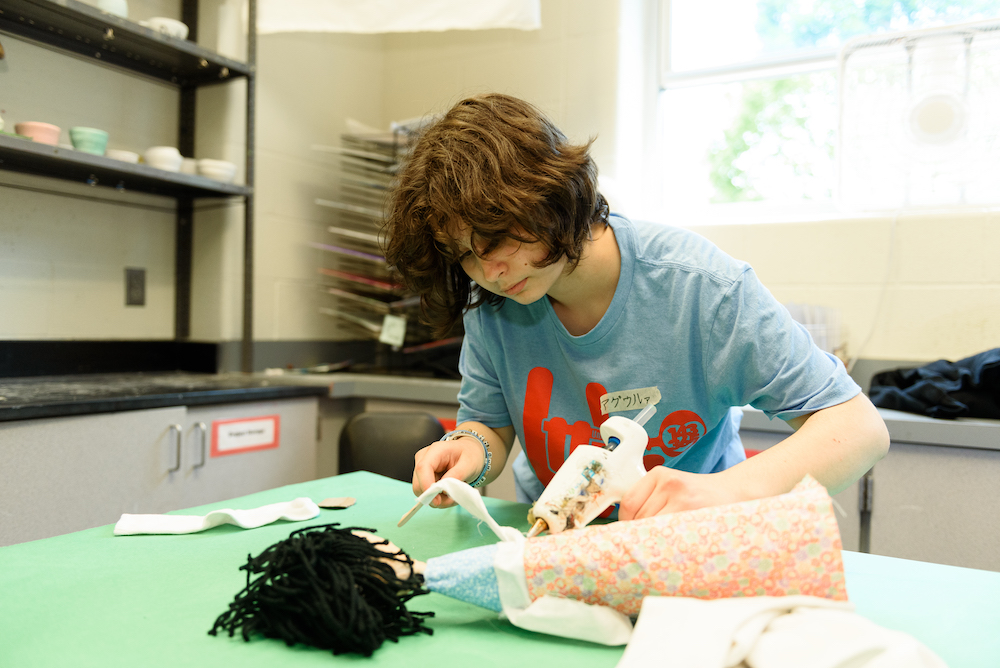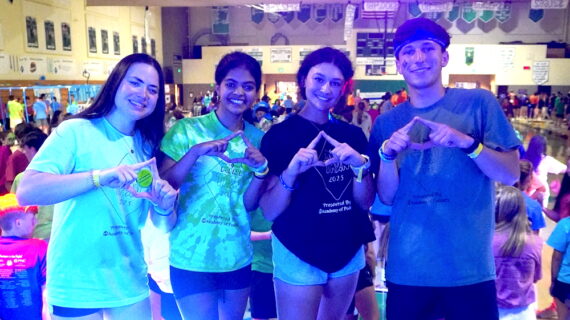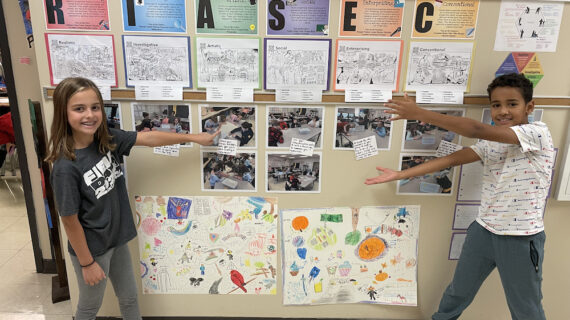
Making art while building community at Shaler Area School District
This story is one in a series created in collaboration with the AASA Learning 2025 Alliance to celebrate the work of groundbreaking school districts in the Pittsburgh region. Kidsburgh will share these stories throughout 2023.
On a February morning, teacher Kimberly Piekarski left Shaler Area High School with two dozen students from the English Language Learners (ELL) program. On this field trip to nearby Millvale, they would get an up-close look at murals painted by artist Maxo Vanka in the 1930s.
For these teenagers, the visit had a significance beyond seeing impressive art or learning local history.
The murals focus on social justice and immigrant experiences, says Piekarski, “so it was inspiring for my students, who have their own experiences as immigrants in the country, to see that and reflect on what their experiences have been.”
The teens returned to school ready for a challenge: As part of the LIGHT Education Initiative, which promotes teaching about the Holocaust, genocide, and human rights violations, Shaler Area students will plan and paint their own mural about social justice and belonging.
The work will happen in collaboration with artist Amanda Lynn and the district’s art teachers, who will learn large-scale mural skills from Lynn. But the students will guide the project.

This project is one outgrowth of Shaler Area’s Positive Behavior Intervention System (PBIS), which teaches social-emotional skills to all students and offers higher levels of social-emotional support and training to those who need it.
Equity, inclusion, and belonging are very important for these students, as for every student at Shaler Area, Piekarski says.
“One of our keys with all the projects we do, including this field trip, is not just to get the kids out of a building. We want them to walk away with these experiences and realize that Shaler Area is their home. It’s not just the place that they go to every day,” she says. “Belonging is something we want them to feel on a daily basis.”

BUILDING SKILLS, BUILDING COMMUNITY
History teacher Nick Haberman created the LIGHT Initiative with a mission that couldn’t be more relevant: to inspire, prepare, and empower the next generation of humanitarians.
With sponsorship by the Holocaust Center of Pittsburgh and other funders, Haberman has created a dedicated room for LIGHT Initiative activities – referred to as the LIGHT Room. His project is now spreading to other districts around the Pittsburgh region.
“Schools often have activities offices to coordinate student activities. They have athletics offices, they have guidance offices, attendance offices,” Haberman says. “I was a social studies teacher connected to the ELA teachers struggling to find that place where humanitarianism lives. We used to call it civics education. To me, the LIGHT Room is essentially a maker space for the humanities.”
Among the projects that have grown out of this humanitarian focus: the Positive Painting Project and the school’s annual celebration of the Fred Rogers-inspired 143 Day.
The timing of this work is key, says Shaler Area Superintendent Dr. Sean Aiken: Coming out of the pandemic lockdown, students nationwide struggled not just with academic learning loss, but with less tangible impacts.
What was lost socially and emotionally when school dances and school plays didn’t happen, and kids weren’t managing the daily rhythm of changing classes in crowded halls, jostling for space at lockers, and piling onto school buses at the end of the day? What happened when football games were played in empty stadiums, with players cheered by no one and fans sequestered at home instead of gathered together under Friday night lights?
These questions have special meaning at Shaler Area. Despite its considerable size (the district serves 4,000 kids from Millvale, Etna, Reserve, and Shaler Township north of Pittsburgh), it’s a place where face-to-face connections have always mattered.
“Shaler is so community-minded,” Aiken says. “If you had to count the number of T-shirts and sweatshirts and hoodies and all the different spirit wear, I would put us up against anybody. There’s just such a tremendous sense of pride in this community.”
Given that focus, the district emerged from the pandemic with social-emotional and academic learning as equal priorities. They embraced both under the umbrella of equity, with PBIS and the LIGHT Initiative as centerpieces.

To help fuel this work, Shaler Area participates in the Western Pennsylvania Learning 2025 Alliance, a regional cohort of school districts working with peers across the country to create student-centered, equity-focused schools. Led by local superintendents and by AASA, The School Superintendents Association, the Alliance convenes for workshops, networking, and professional development.
Like many schools in the Alliance, Shaler Area used human-centered design — a decision-making framework that gives all participants an equal voice — to design their Portrait of a Graduate, a description of the strengths graduating students should possess.
Looking at those results just days before the pandemic descended in March 2020, Aiken saw value in the choices the district had made. But at the time, he read words like “perseverance” and “empathy” and wondered how they might serve as more than appealing buzzwords.
Three years later, he knows two things: First, those words are absolutely right for this moment in history. Second, every child at Shaler Area is respected as an individual — seen, known, heard, and loved with empathy. The sense of community that has endured for generations is stronger than ever. And the needs of students and teachers are being addressed with caring and equity by systems that work.
“At the end of the day,” Aiken says, “it really is about meeting those needs individually. It’s caring teachers, social workers, counselors, principals, and parents, too — our whole community working together.”
Want to download this story? Click here for a PDF.

















